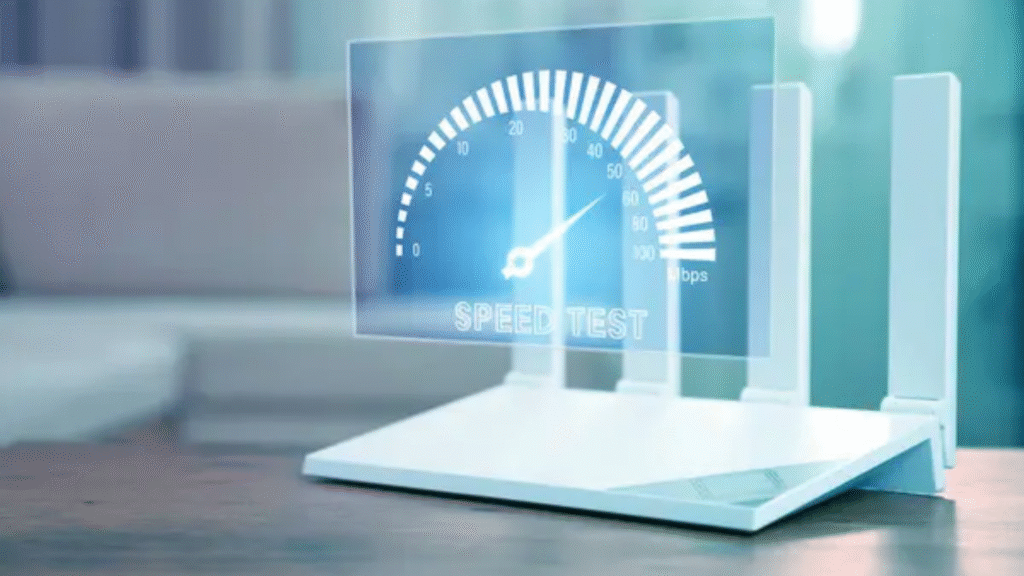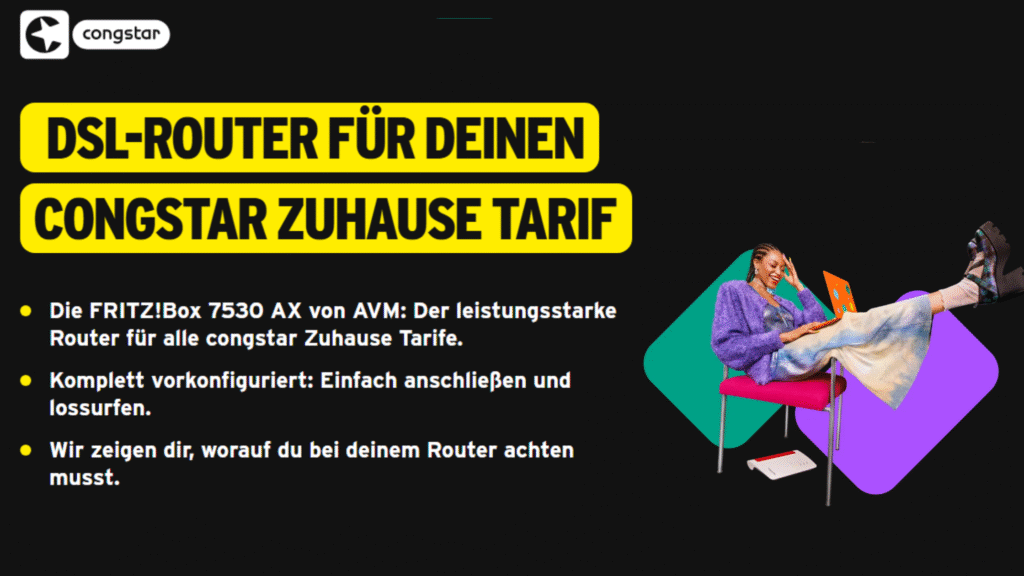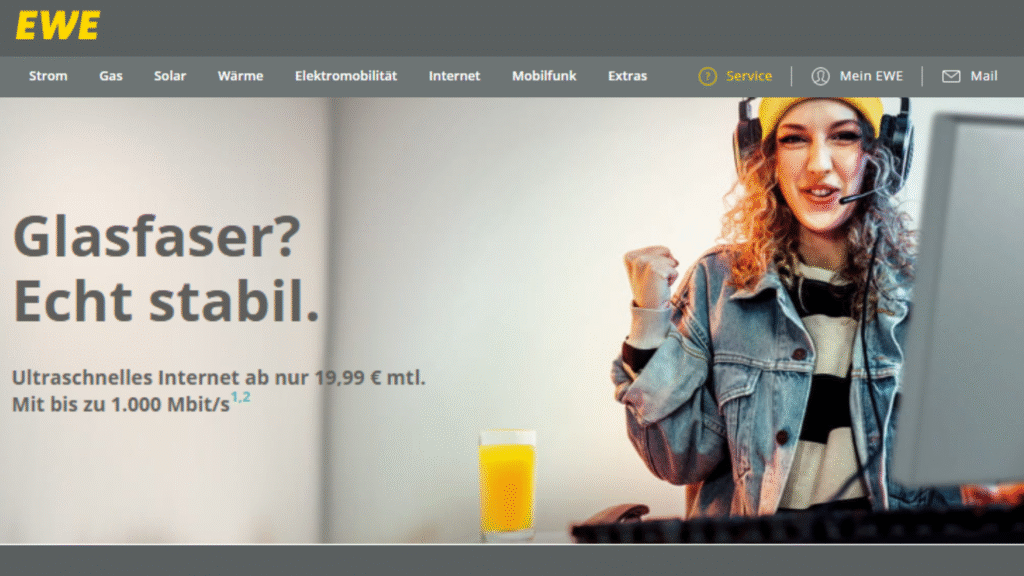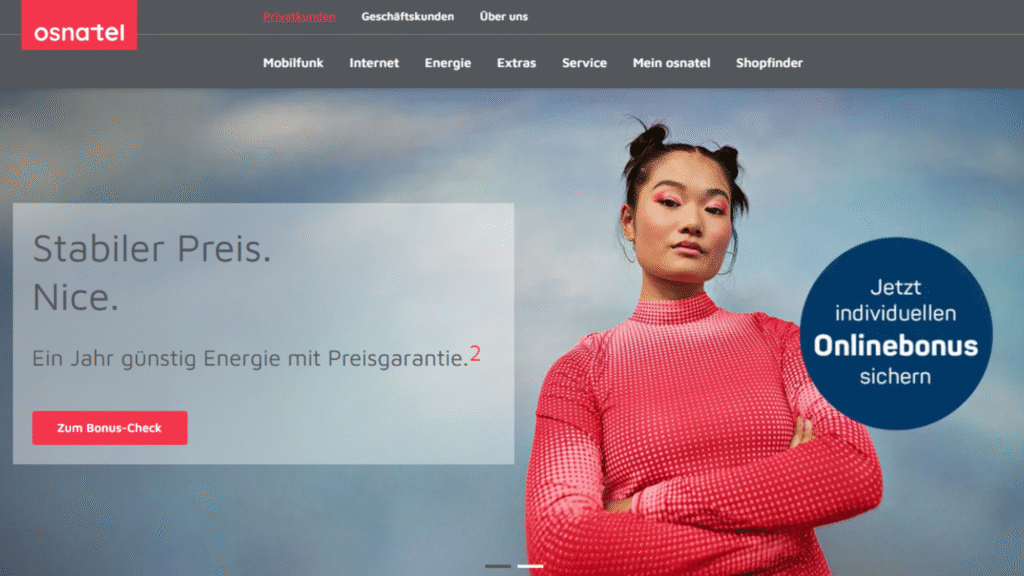
How to Make a Smart Choice with High Speed Internet Providers
High-speed internet isn’t a luxury anymore — it’s the foundation for how we work, stream, connect, and live day to day. But with so many providers claiming to offer the best speed and value, how do you know which one truly fits your needs?
In Germany, the market is filled with strong options like Congstar, EWE, Deutsche Glasfaser, NetCologne, and Vodafone. Each offers something different, from ultra-fast fiber to flexible plans or regional reliability. This guide will help you cut through the marketing noise, compare what actually matters, and choose a provider that works for your lifestyle — not just your location.
Start with What You Really Need

Before looking at internet plans, it’s important to understand how you actually use the internet. High speed alone doesn’t guarantee value—it depends on your daily habits, household size, and connected devices.
Identify Your Speed Requirements
If your internet use revolves around working from home, streaming content, or gaming online, you’ll likely need faster and more stable speeds than someone who just browses the web. While providers often highlight download speed, upload speed can be just as critical—especially for video calls, sending large files, or backing up data to the cloud. The goal is not to get the fastest plan available, but the one that meets your actual usage needs without overpaying.
Consider Devices and Users in Your Household
Internet performance is heavily affected by the number of active users and devices in your home. Even a small household can put serious demand on a network when everyone is connected simultaneously. A family using multiple smartphones, laptops, tablets, and smart TVs will require a more powerful connection than a single-person household. The more devices in use, the greater the need for both speed and reliability.
Set Your Budget with Long-Term Perspective
It’s easy to be drawn in by promotional pricing, but many internet deals come with hidden long-term costs. After the first few months, monthly rates often increase, and additional charges like setup fees or equipment rental can add up quickly. A slightly higher plan with reliable service and transparent pricing may turn out to be a better deal over time than a discounted one that becomes expensive or frustrating down the road. Thinking in terms of total value over the full contract period helps avoid surprises later.
Compare Germany’s Most Popular High Speed Providers
Now that you understand your needs, it’s time to see how the top providers in Germany measure up. Each one brings a different strength to the table—some focus on flexibility, others on cutting-edge speed or regional service. Knowing what sets them apart will help you choose a provider that fits your lifestyle, not just your address.
1. Congstar Internet Services

Congstar, a subsidiary of Telekom Deutschland, offers flexible and budget-friendly internet plans across the country. Built on Telekom’s reliable infrastructure, it appeals to users looking for stability without the hassle of long-term contracts.
Who Congstar Works Best For
Congstar is ideal for individuals and households seeking straightforward internet plans without the commitment of long-term contracts. Its offerings cater to users who prioritize flexibility and affordability, such as students, renters, or those frequently relocating.
What Makes It Different
Congstar stands out for its simplicity and flexibility. It offers several plans that allow customers to choose what fits their lifestyle best.
- Zuhause 50 Flex: A contract-free DSL plan offering up to 50 Mbps download speeds, suitable for basic streaming and browsing.
- Zuhause 100 Flex: Offers up to 100 Mbps and suits users who stream regularly or work from home.
- Zuhause 250 Flex: A faster DSL plan designed for households with multiple users and devices.
- Homespot LTE Plans: Wireless internet using LTE, ideal for locations without DSL availability. Data volume varies depending on the plan.
These flexible packages are easy to cancel monthly, making Congstar a rare provider for short-term solutions.
Things to Consider
While Congstar offers impressive freedom, it doesn’t bundle services like TV or landline. LTE plans also have data limits, which might not suit heavy users. And although the brand uses Telekom’s network, top-tier fiber speeds are not available through Congstar directly.
2. EWE Internet Services

EWE is a regional internet provider in northwest Germany, offering both DSL and fiber-optic connections. Known for its reliable service and regional focus, EWE caters to a variety of customer needs with flexible plans.
Who EWE Works Best For
EWE is ideal for residents in northwest Germany seeking dependable internet service. Its offerings are particularly suited for households that require stable connections for activities like streaming, remote work, and online education.
What Makes It Different
EWE stands out for its combination of DSL and fiber-optic plans, providing options for different speed requirements and budgets.
- DSL Plans: EWE offers DSL connections with speeds ranging from 25 to 100 Mbps, suitable for everyday internet use.
- Fiber-Optic Plans: For higher speed needs, EWE provides fiber-optic connections with speeds up to 1,000 Mbps, ideal for bandwidth-intensive activities.
All plans include a flat-rate for telephone calls within Germany, and customers can opt for additional services like security packages and TV options.
Things to Consider
While EWE offers competitive plans, availability is primarily in the northwest region of Germany. Customers should check service availability in their specific location. Additionally, some plans may require a minimum contract period, so it’s important to review the terms before committing.
3. Deutsche Glasfaser Internet Services

Deutsche Glasfaser is a leading provider of high-speed fiber-optic internet in Germany, specializing in FTTH (Fiber to the Home) connections. Their services are particularly beneficial for users seeking ultra-fast and stable internet connections.
Who Deutsche Glasfaser Works Best For
Deutsche Glasfaser is ideal for households and businesses that require high-speed internet for activities such as streaming in 4K, online gaming, and remote work. Their FTTH technology ensures consistent and reliable connectivity, making it suitable for users who demand top-tier performance.
What Makes It Different
Deutsche Glasfaser offers a range of tariffs to cater to different needs:
- DG basic 100: Provides up to 100 Mbit/s download and 50 Mbit/s upload speeds, suitable for standard internet usage.
- DG classic 300: Offers up to 300 Mbit/s download and 150 Mbit/s upload speeds, ideal for households with multiple users.
- DG premium 500: Delivers up to 500 Mbit/s download and 250 Mbit/s upload speeds, perfect for heavy internet users.
- DG giga 1000: Provides up to 1,000 Mbit/s download and 500 Mbit/s upload speeds, designed for maximum performance.
All plans include a flat-rate for internet usage, and higher-tier plans come with additional features such as telephone and mobile flat rates. Customers can also benefit from a tariff change guarantee, allowing them to switch to a lower tariff within the first 12 months if needed.
Things to Consider
While Deutsche Glasfaser offers impressive speeds and reliable service, their availability is primarily in specific regions. Potential customers should check the service availability in their area. Additionally, after the initial 12-month promotional period, the monthly fees increase, so it’s important to consider the long-term costs when selecting a plan.
4. NetCologne Internet Services

NetCologne is a regional telecommunications provider based in Cologne, Germany, offering high-speed internet, telephone, and TV services. With its own extensive fiber-optic network, NetCologne provides reliable and fast internet connections to customers in the Cologne region and surrounding areas.
Who NetCologne Works Best For
NetCologne is ideal for residents in the Cologne region seeking high-speed and stable internet connections. Its services cater to both individual users and families who require consistent performance for activities such as streaming, online gaming, and remote work.
What Makes It Different
NetCologne offers a variety of internet plans to suit different needs:
- NetSpeed 50: Provides up to 50 Mbit/s download and 10 Mbit/s upload speeds, suitable for basic internet usage.
- NetSpeed 100: Offers up to 100 Mbit/s download and 40 Mbit/s upload speeds, ideal for households with multiple devices.
- NetSpeed 250: Delivers up to 250 Mbit/s download and 50 Mbit/s upload speeds, perfect for streaming and online gaming.
- NetSpeed 500: Provides up to 500 Mbit/s download and 100 Mbit/s upload speeds, designed for heavy internet users.
- NetSpeed 1000: Offers up to 1000 Mbit/s download and 200 Mbit/s upload speeds, catering to users with the highest demands.
All plans come with unlimited data and can be bundled with telephone and TV services. NetCologne also provides flexible contract options, including plans without minimum contract durations.
Things to Consider
While NetCologne offers impressive speeds and reliable service, its availability is primarily limited to the Cologne region and surrounding areas. Potential customers should check service availability in their specific location. Additionally, while NetCologne’s upload speeds are sufficient for most users, they may be lower compared to some other providers, which could be a consideration for users with high upload requirements.
5. Vodafone Zuhause Plus Services

Vodafone is one of Germany’s leading internet service providers, offering a wide range of high-speed internet solutions through its GigaZuhause plans. These plans utilize various technologies, including cable, DSL, fiber, and LTE/5G, to deliver reliable connectivity across the country.
Who Vodafone Works Best For
Vodafone’s diverse offerings make it suitable for a broad spectrum of users. Whether you’re a casual browser, a remote worker, or a household with multiple devices streaming simultaneously, Vodafone has tailored plans to meet these varying demands. Additionally, their bundled packages are ideal for customers looking to combine internet, telephone, and TV services under one provider.
What Makes It Different
Vodafone’s GigaZuhause plans stand out due to their flexibility and comprehensive service options. Customers can choose from various connection types based on their location and needs:
- GigaZuhause Cable: Offers high-speed internet via the TV cable network, with download speeds up to 1,000 Mbit/s. This option is ideal for households requiring robust bandwidth for activities like streaming and gaming.
- GigaZuhause DSL: Utilizes the traditional telephone line to provide internet speeds up to 250 Mbit/s, suitable for areas where cable or fiber connections are unavailable.
- GigaZuhause Fiber: Delivers ultra-fast internet through fiber-optic technology, ensuring stable and high-speed connections for data-intensive tasks.
- GigaCube: A mobile internet solution that provides connectivity via the LTE/5G network, perfect for users in areas without fixed-line infrastructure or those needing a portable internet option.
Vodafone also offers the GigaKombi benefit, allowing customers to bundle mobile and fixed-line services for additional discounts and perks. Moreover, promotional offers often include reduced prices for the initial months and cashback incentives.
Things to Consider
While Vodafone provides extensive coverage and a variety of plans, the actual speeds and availability can vary depending on your location and the type of connection. It’s essential to check the specific services available in your area. Additionally, after promotional periods, monthly fees may increase, so reviewing the long-term costs and contract terms is advisable before committing.
6. OSNATEL Internet Services

OSNATEL is a regional internet provider in Germany, focusing on delivering high-speed broadband connections in certain areas, particularly in the southwestern regions. Their offerings cater to users who are seeking reliable internet services with a focus on affordability and stability.
Who OSNATEL Works Best For
OSNATEL is ideal for customers in specific regional areas of Germany looking for dependable and cost-effective internet service. It’s particularly suited for users who want a stable connection for everyday browsing, streaming, or working from home, but without the higher costs of some major national providers.
What Makes It Different
OSNATEL offers several attractive plans to suit varying speed and budget requirements:
- DSL 50: Offers up to 50 Mbit/s download and 10 Mbit/s upload speeds, great for general internet use.
- DSL 100: Provides speeds up to 100 Mbit/s download, perfect for households with multiple devices.
- Fiber 200: A fiber-optic plan that offers speeds up to 200 Mbit/s for more demanding users.
All plans come with unlimited data and are available with flexible contract options, including the possibility of shorter-term contracts.
Things to Consider
OSNATEL’s coverage area is more limited compared to some larger providers, so potential customers should verify if their location is served. Additionally, while their plans are competitively priced, they may not offer the same high speeds or additional services as some of the bigger national players.
Key Takeaways to Guide Your Final Decision
Now that you’ve seen how each provider compares, it’s time to focus on what really matters when making your choice. With so many good options available, the best decision comes down to what fits your lifestyle, habits, and expectations—not just who offers the fastest connection on paper.
Match Performance to Your Daily Life
It’s easy to be drawn in by the promise of gigabit speeds, but not everyone needs that level of performance. For most homes, a stable mid-speed plan is more than enough for browsing, streaming, or remote work. What matters more is how consistent the speed is during peak hours and how well your connection handles multiple devices at once. If your internet habits are fairly average, you might get better results from a 100 Mbps plan that performs steadily than from a 500 Mbps plan that struggles during busy times.
Don’t Underestimate Customer Support
Fast internet is only part of the story—what happens when something goes wrong? Waiting days for a technician or struggling with automated support can quickly turn a good deal into a frustrating experience. Some regional providers like NetCologne or EWE stand out specifically because of their localized support teams. Responsive customer service can make all the difference, especially if you work from home, run a business, or have kids relying on stable internet for school and entertainment.
Look Beyond the First Year Discounts
A lot of providers advertise low entry prices, but those promotional rates usually expire after six or twelve months. If you’re not careful, your bill could double after the first year. Take time to read the fine print and compare the total cost over two years—not just the monthly rate in the beginning. Some providers may offer fewer perks upfront but save you more in the long run with transparent pricing and consistent service. A reliable contract that stays fair over time is often worth more than flashy deals that don’t last.
Conclusion
Choosing the right high-speed internet provider in Germany is more than just picking the fastest plan or grabbing the lowest promotional price. It’s about understanding your personal needs, evaluating what each provider offers, and thinking long-term. By focusing on how you actually use the internet—how many people you share it with, what kind of support you expect, and how much you’re really willing to spend—you’ll be in a better position to make a smart, stress-free decision.
Each provider featured here has something unique to offer. Congstar stands out for its flexibility, EWE brings regional reliability, Deutsche Glasfaser leads with pure fiber performance, NetCologne delivers strong local service in NRW, and Vodafone provides wide-reaching bundled solutions. The best fit depends on your priorities—and now, you’re equipped to choose with confidence.

